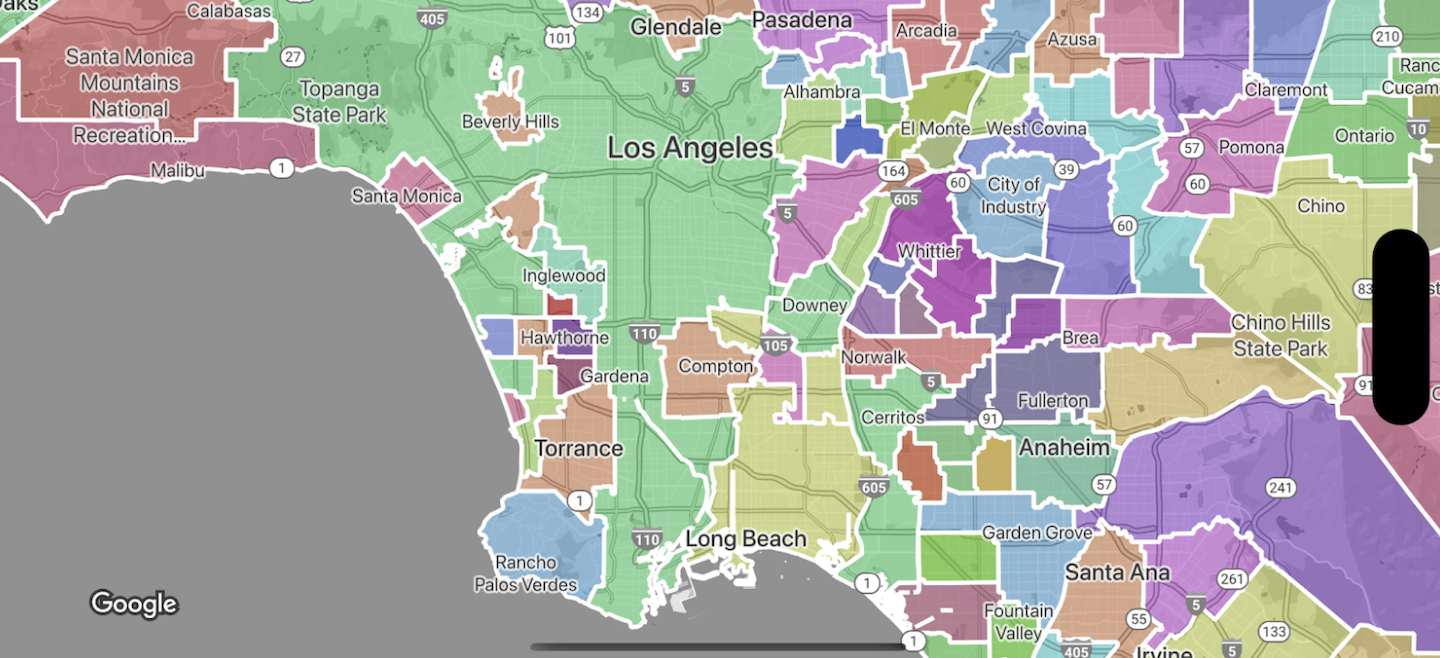Stylizacja granic oparta na danych umożliwia dostęp do wielokątów Google dla granic administracyjnych, stosowanie stylizacji do wielokątów granic i wyświetlanie ich na mapach.

Styl oparty na danych w przypadku granic umożliwia kierowanie na regiony według identyfikatora miejsca i stosowanie niestandardowego stylu do wielokątów granic na mapie. Każdy typ funkcji reprezentuje typ regionu. Podczas konfigurowania stylu mapy możesz wybrać, które typy funkcji chcesz włączyć. Sprawdź zasięg granic Google, aby zobaczyć zasięg granic w poszczególnych krajach.
Typy funkcji
Styl oparty na danych zapewnia dostęp do granic Google w przypadku typów obiektów reprezentujących obszary administracyjne. Obszary administracyjne są podzielone na kategorie według funkcji, np. kraj, stan, miejscowość i kod pocztowy. Rodzaje obiektów są uporządkowane według poziomu administracyjnego, którego struktura różni się w zależności od kraju. Są to między innymi:
GMSFeatureTypeCountry– narodowy podmiot polityczny, zwykle typ najwyższego rzędu.GMSFeatureTypeAdministrativeAreaLevel1– jednostka administracyjna pierwszego rzędu poniżej poziomu kraju. W Stanach Zjednoczonych są to stany.GMSFeatureTypeAdministrativeAreaLevel2– jednostka administracyjna drugiego rzędu poniżej poziomu kraju. W Stanach Zjednoczonych są to hrabstwa.GMSFeatureTypeLocality– zarejestrowana jednostka polityczna w postaci miasta lub miejscowości.GMSFeatureTypePostalCode– kod pocztowy używany do adresowania przesyłek pocztowych na terenie danego kraju.GMSFeatureTypeSchoolDistrict– okręg szkolny, obejmuje szkoły podstawowe i średnie.
Regiony administracyjne są reprezentowane na mapie jako warstwy cech. Każdy typ ma własną warstwę. Warstwy cech są włączane dla każdego stylu mapy. Podczas konfigurowania stylu mapy w konsoli Google Cloud możesz wybrać, które warstwy obiektów chcesz włączyć.
Stylizowanie wielokątów granic
Możesz zastosować style do wielokątów granicznych, aby określić wypełnienie (kolor, przezroczystość) i kreskę (kolor, przezroczystość, grubość kreski). Stylizacja umożliwia:
- Stylizuj wielokąt graniczny lub wyświetl wszystkie granice dla typu obiektu.
- Utwórz kartogram.
Zasięg granic Google pokazuje dostępność typów funkcji w poszczególnych krajach.

